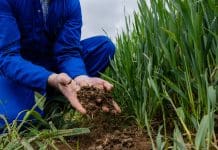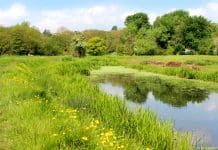Where works to main rivers or sea defences are to be carried out, environmental permits will be required. Here, CIP Ltd explain what is required before works take place
A permit, consent or authorisation may be required before any construction work, permanent or temporary, is commenced in, over or under a main river or ordinary watercourse or within a specified distance of the bank of any main river, or that will affect existing flood or sea defences. This allows the Regulator (EA, NRW, LLFA or SEPA as appropriate) to examine the work proposed and to satisfy themselves that the risk of flooding either locally or up or downstream will not be increased by the work during construction or on completion. A separate permit, consent or authorisation may be required for the temporary and for the permanent work.
England and Wales: Main Rivers – Permit or Exemption?
Through The Environmental Permitting (England and Wales) (Amendment) (No. 2) Regulations 2016, activities relating to flood risk related activities for works in or around main rivers or a sea defence may be required to have an Environmental Permit in England or Flood Risk Activity Permit in Wales (both formerly Flood Defence Consent). However, low-risk activities are dealt with under ‘exclusions’ or ‘exemptions’. There are four ‘tiers’ in England and three in Wales ranging from ‘do nothing’ to a requirement for a complex bespoke permit.
Exclusions
Tier 1: Activities which are excluded from requiring a permit or exemption, e.g. where no permission is required from the Regulator (EA/NRW).
Excluded activities are listed on the EA/NRW websites.
Exemptions
Tier 2: Activities which fall under an exemption and are required to be registered with the EA/NRW.
Each exemption has specific conditions which must be adhered to and an exemption cannot be registered unless all conditions are met. There are 27 EA exemptions and 19 NRW exemptions and full details can be found on their respective websites.
Permits
Tier 3: (England only) A Standard Rules Permit is available for a number of activities.
The full list can be found on the EA website.
Bespoke Permits
Tier 4: (England and Wales). These are for all activities which cannot comply with the conditions of an exclusion, exemption or, in England, a standard rules permit. Bespoke permit applications are a complex process, and take around four months to be processed by the EA/NRW.
Ordinary Watercourse – Requirement for Consent
Land drainage consent must be obtained from the Lead Local Flood Authority (LLFA) which may be an Internal Drainage Board, Unitary Authority or County Council. (Contact EA/NRW or Local Council to locate the LLFA for the watercourse). There are also a number of temporary works which would require a consent, for example pumping off excessive waters and any dredging work.
Works on or adjacent canals
The Canal and River Trust (C&RT) has responsibility for the operation and maintenance of all canals in England and Wales. Where works are planned that may affect Canal and River Trust property, agreement may be required ahead of works progressing. It is however, recommended that the first step should be to contact the local C&RT business team to discuss activities and confirm if an Authorisation for Access form is be required. Further information can be found at www.canalrivertrust.org.uk.
Scotland: Main rivers, watercourses and all inland waters
Authority is required from SEPA for any engineering, building or other works in inland surface waters (including wetlands) and works in the vicinity of inland surface waters where those works pose a risk of significant adverse impact.
Works on or adjacent to canals
It is recommended that where works are going to take place on or adjacent to any of the main Scottish canals that contact be made with Scottish Canals at: www.scottishcanals.co.uk.
Sarah Kenny
Construction Industry Publications Ltd
skenny@cip-books.com
www.cip-books.com
Please note: this is a commercial profile













